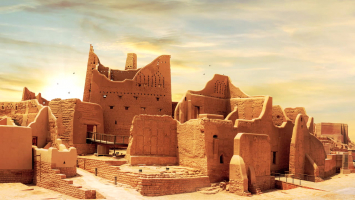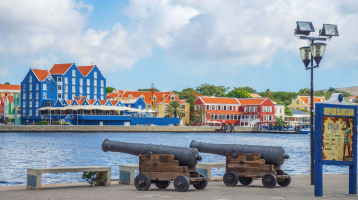Top 6 Most Beautiful Historical Sites in Loch Lomond
Loch Lomond is a great stopover for travelers visiting England. It has extremely beautiful natural scenery along with interesting historical sites. Let's find ... read more...out with Toplist the most beautiful historical sites in Loch Lomond!
-
Of all the Scottish strongholds, Dumbarton Castle has the most history that has been documented. It is perched atop the 73-meter-tall Dumbarton Rock, a piece of volcanic basalt that juts out above the Scottish town of Dumbarton. Known then as "Alt Clut" or "Rock of the Clyde," Dumbarton Rock first appears in writing in the fifth century. At the same time, a massive fortification occupied the site, which later became the Strathclyde region's capital.
Later, it was given the name Dun Breatann, which means "Fortress of the Britons" in Gaelic. Dunbarton is derived from this name. The enormous Dark Age stronghold would have provided protection from the region's ongoing Viking invasions, such as the one launched in 870 by Viking monarchs Olaf and Ivar of Dublin, which resulted in the River Clyde being filled with 200 longships.Today, there are no longer any signs of the 1st-century bastion, allowing tourists to only speculate about what must have been an intriguing Dark Age fortification. The Portcullis Arch from the 14th century, the Wallace Tower's foundations, and possibly even the White Tower's foundations are some of its remaining medieval elements. The site also has a guard house from the 16th century, where a carved face believed to be that of Sir John Menteith, the person who betrayed William Wallace, is located. However, Dumbarton was reconstructed as a garrisoned fort in the 17th and 18th centuries, which is when the majority of what is seen there now was built.
Location: Castle Rd, Dumbarton G82 1JJ, United Kingdom
Photo: atlasobscura.com 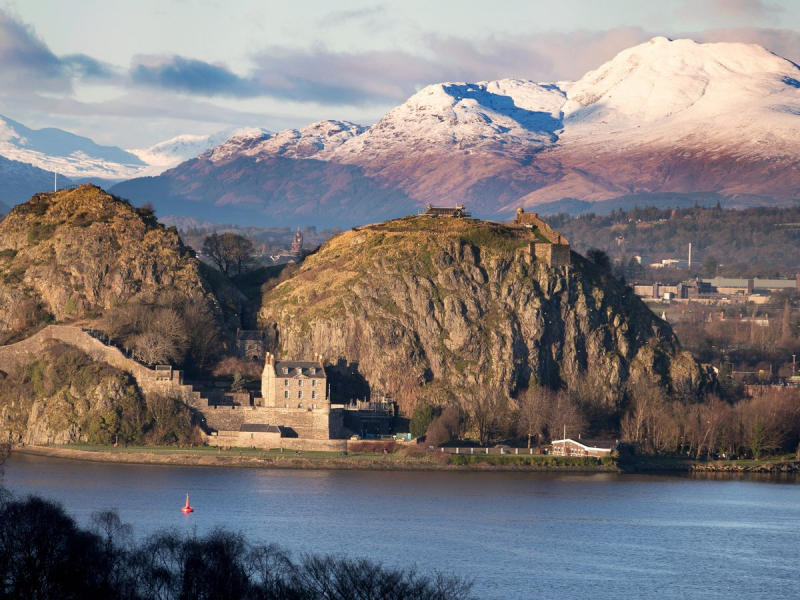
Photo: dailyrecord.co.uk -
Scotland's West Dunbartonshire is home to the 19th-century estate and country home known as Overtoun House. It lies two kilometers north of the village of Milton and three kilometers east of the town of Dumbarton, perched on a hill overlooking the River Clyde. The house, which was constructed in the 1860s and is a prime example of Scottish Baronial architecture, was given to the people of Dumbarton in 1938. After serving as a maternity hospital, it is currently home to a Christian center.
The home is protected as a category A listed structure, and Scotland's Inventory of Gardens and Designed Landscapes includes the grounds. The Overtoun Bridge on the approach road, which was created by H. E. Milner, is one of the landscape's characteristics.
A tearoom providing snacks, hot and cold drinks, and home-baked cakes is now located inside the house. Throughout the summer, there are also numerous guided walks you can take on the property as well as hiking trails nearby. the class of A Christian center is housed in a historic structure that is accessible to the general public. Particularly well-liked features include the beautiful gardens and the walking paths that surround the home. Overtoun House is one of the most beautiful historical sites in Loch Lomond.
Location: Dumbarton G82 2SH, United Kingdom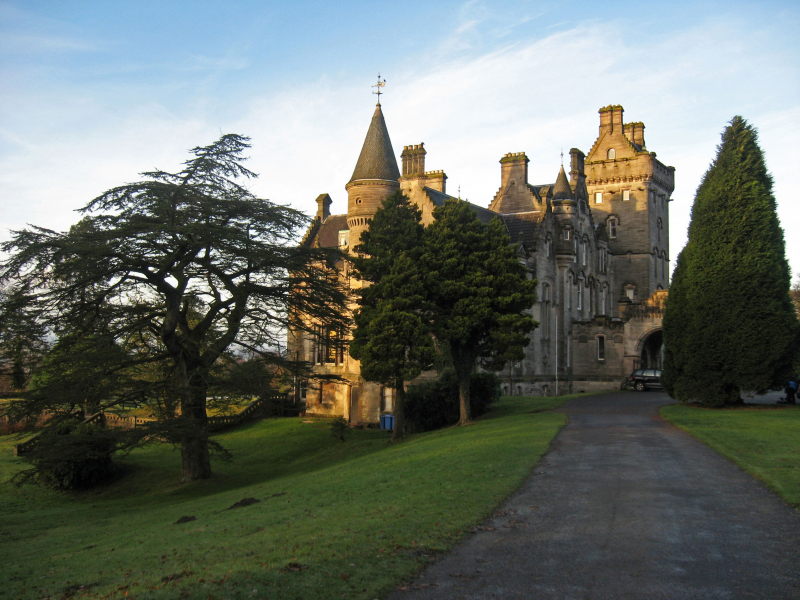
Photo: wikipedia 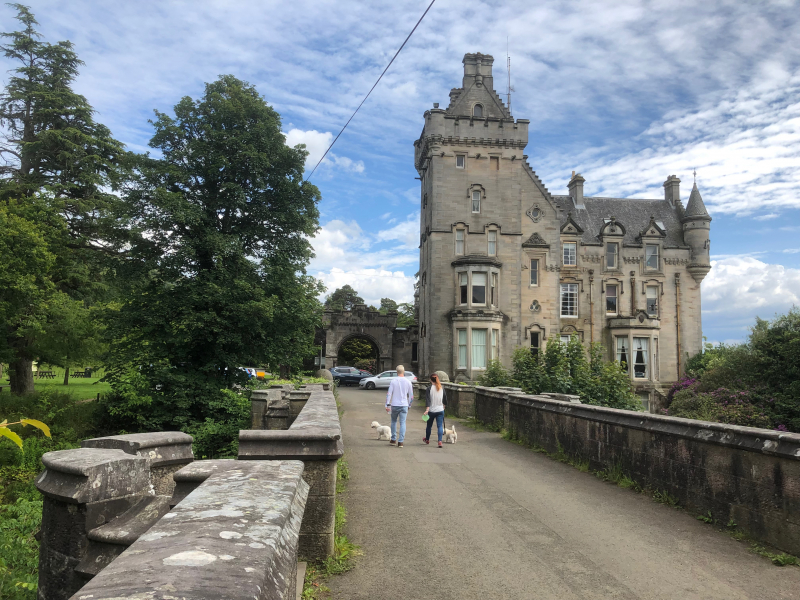
Photo: wikipedia -
A collection at the Scottish Maritime Museum has been recognized as being of national significance to Scotland. With a focus on Scotland's shipbuilding history, it is situated at two locations in the West of Scotland, Irvine, and Dumbarton.
A collection at the Scottish Maritime Museum has been recognized as being of national significance to Scotland. The museum is dedicated to Scotland's history of shipbuilding and is situated at two locations in West Scotland: Irvine and Dumbarton. The Denny Ship Model Experiment Tank at the Dumbarton Museum is dedicated to naval architect William Denny Jr. and his business, William Denny and Brothers of Dumbarton, which was among the most forward-thinking shipbuilding firms in the world and built ships like the Cutty Sark before closing in 1963. The tank was the first commercial instance of a ship testing tank and was finished in 1883.
The 100-meter-long tank and William Denny's drawing office are still present at the tank's original location, which was reopened as a museum in 1983. Photographs and ship model replicas are also on show. Also available is the opportunity for visitors to smooth and carve a genuine wax hull model.
Location: The Linthouse, Harbour Road, Irvine, Ayrshire KA12 8BT, Scotland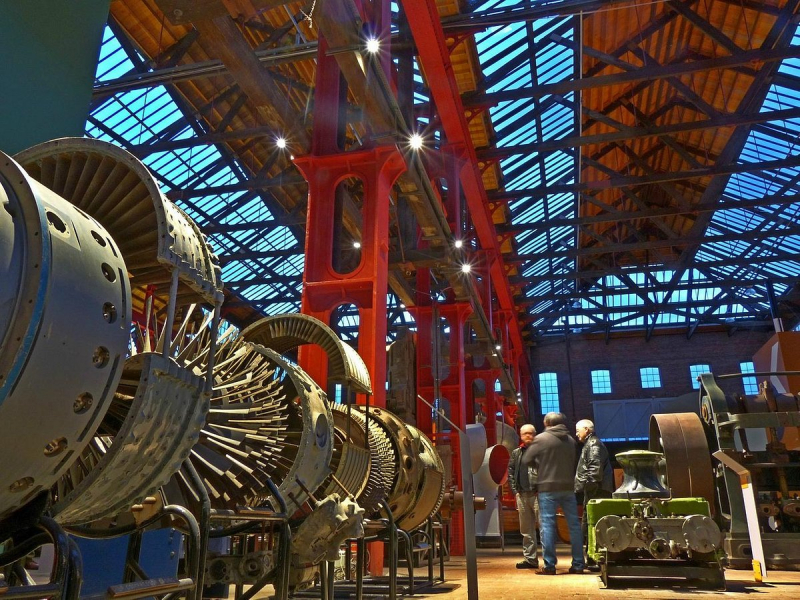
Photo: tripadvisor.com 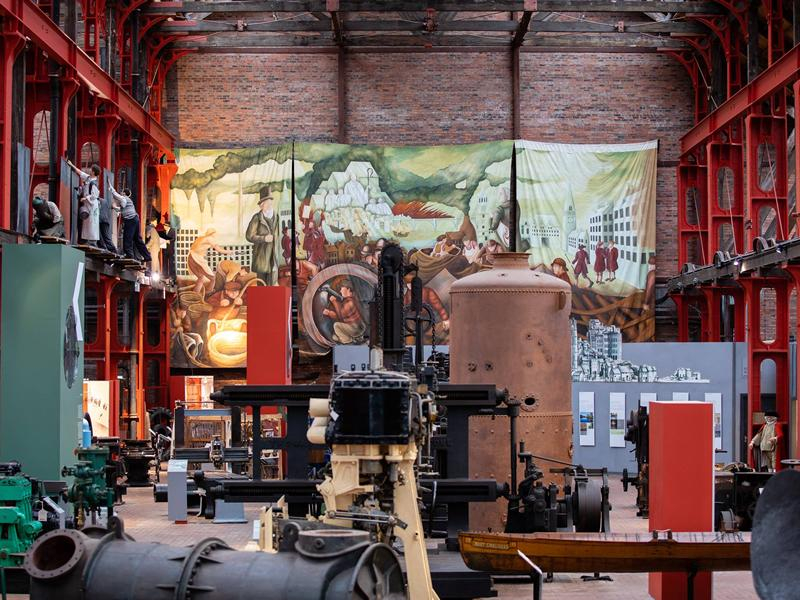
Photo: whatsonglasgow.co.uk -
One of the most beautiful historical sites in Loch Lomond is the Balloch Castle. A Scottish country mansion from the early 19th century, Balloch Castle is located near Loch Lomond's southernmost point in West Dunbartonshire. The Lennox family owned Balloch from the eleventh century, and the old castle was constructed in the thirteenth. When John Buchanan of Ardoch bought the estate in the 19th century, he demolished the ancient castle's ruins and built the current structure.
Robert Lugar is the author of the Tudor Gothic style. Balloch was purchased by Glasgow City Corporation in 1915; since 1975, West Dunbartonshire Council has been the lessee. In 1980, the estate became a national park, and as of 2002, it is a component of Loch Lomond and The Trossachs National Park. The house is presently included on the Buildings at Risk Register, despite the fact that it has occasionally served as visitor amenities and council offices. The estate of Balloch Castle is designated on Scotland's Inventory of Gardens and Designed Landscapes as a category A listed building.
The Nature Conservancy Council and the neighborhood Countryside Ranger Service were among the previous residents who used the property on occasion as visitor facilities and offices. The structure was listed on Scotland's Buildings at Risk Register in 2008 due to its poor condition. To allow for renovations to the now-vacant building, a listed building approval application was submitted in January 2014. The West Dunbartonshire Council set a schedule of repairs to maintain the structure in February 2014.
Location: West Dunbartonshire, Scotland
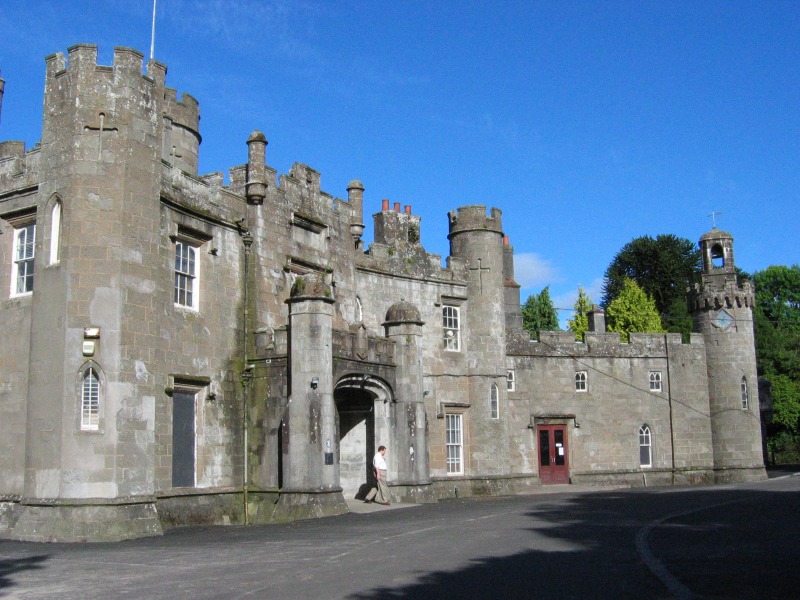
Photo: wikipedia 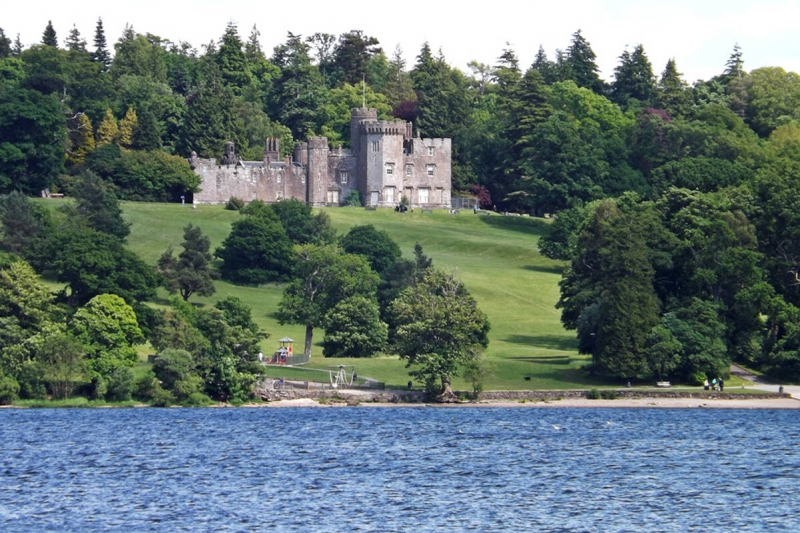
Photo: lochlomond-thetrossachs.co.uk -
On the orders of the Earl of Menteith, Inchmahome Priory was initially founded as an Augustinian monastery in about 1238. Over the years, Inchmahome Priory's remote position made it the perfect haven; even royalty, like King Robert Bruce, viewed it as a retreat. The time that a young Mary Queen of Scots sought refuge at the priory, however, is well remembered. Inchmahome Priory declined after the Protestant Reformation of 1560 and ceased to function as a working monastery.
At Inchmahome Priory, most of the cloister buildings are now in ruins, but the chapter house, which was turned into a mausoleum in the 17th century, has survived. The extensive collection of exquisitely carved stones, which includes an effigy of Walter Stewart and Countess Mary in a tender embrace, is on display for visitors to see.
The name of Mary Queen of Scots is affixed to the small boxwood bower in the middle of the island. Those with keen eyes should keep an eye out for it. The remains, which are believed to have been built in the 1500s, are surrounded by gnarly old chestnut trees.Location: Boatshed, Port of Menteith, By Kippen, Stirling FK8 3RA, United Kingdom
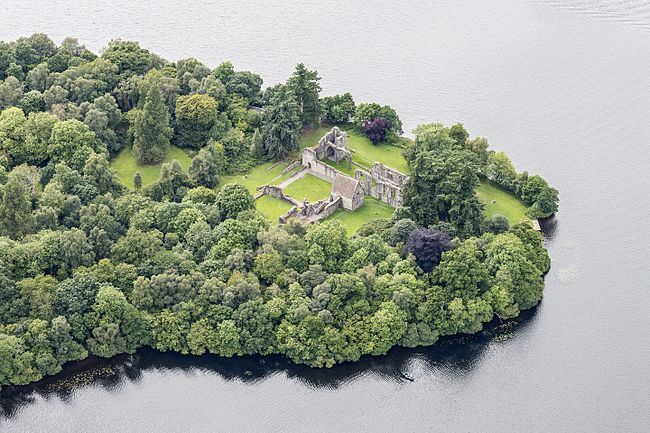
Photo: wikipedia 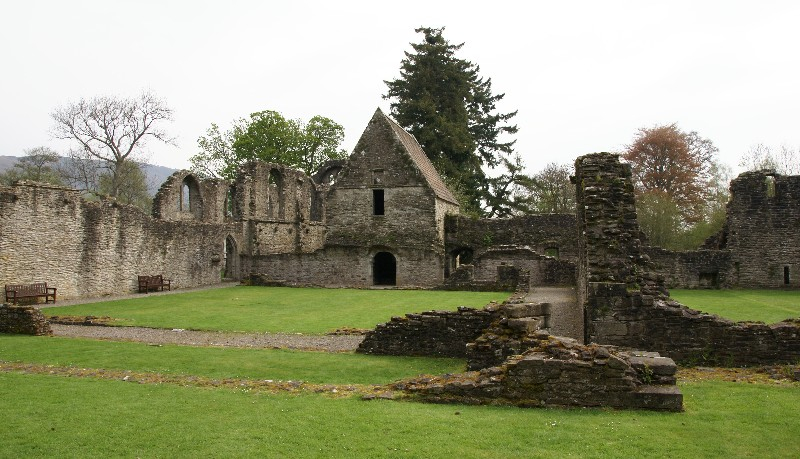
Photo: wikipedia -
The next position on the list of the most beautiful historical sites in Loch Lomond is St. Maha's Well. it is identified by a low stone structure in the shape of a horseshoe that is located in a marshy field on the slopes above Loch Lomond's east bank where a spring emerges from the ground. The same Maha for whom Balmaha, a neighboring community, is called. People reportedly used the water from this well as a remedy. Stones arranged in the shape of a horseshoe surround the little spring. A little standing stone that is just above it may be the remains of a good house or stone cross.
Holy springs and wells, including St. Maha's Well, have a long history. Freshwater stood for renewal, purity, and fertility. As a result, it was employed in religious ceremonies and for medical purposes. Even now, some individuals still wash in the spring in an effort to heal their ailments.
A little standing stone and the ruins of a small stone enclosure are nearby on a low elevation. Possibly another wellhead that has been thrown out. The standing stone may be the fragments of a medieval stone cross that once stood guard over the holy well.
Location: Buchanan, Stirlingshire
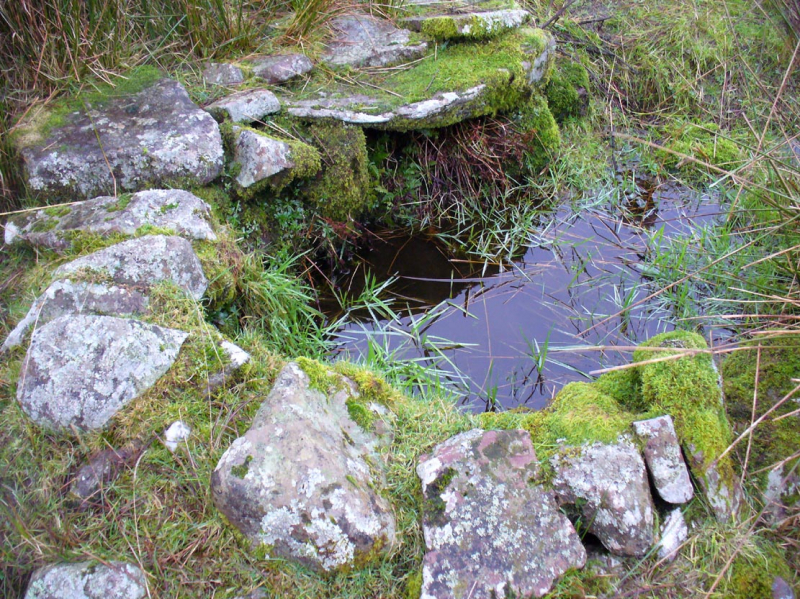
Photo: megalithix.wordpress.com/ 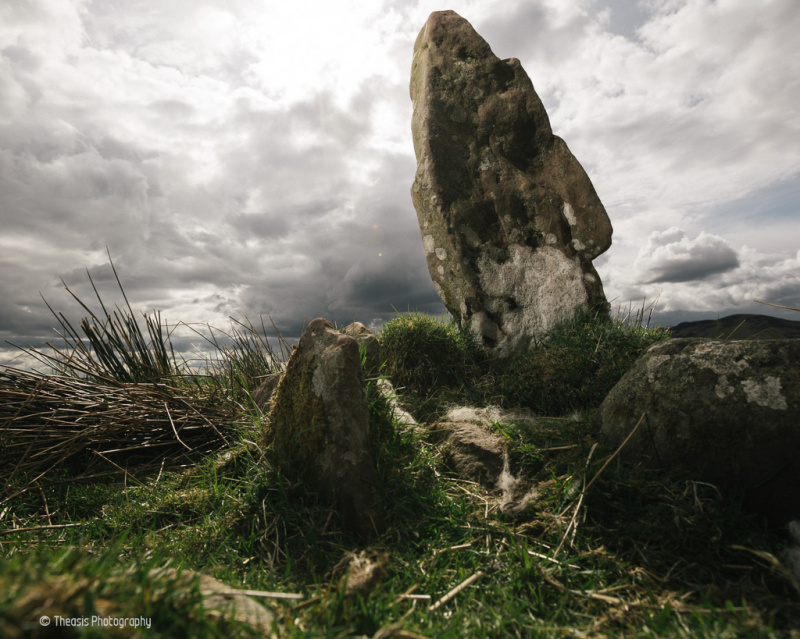
Photo: megalithix.wordpress.com/


























